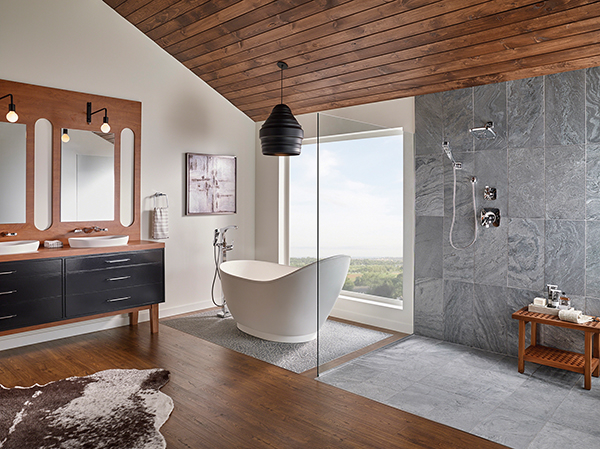(Family Features) When it comes to beauty, few building materials can compete with natural stone. One-of-a-kind markings, dramatic colors and rich finishes make it a popular choice, especially in bathrooms where it can transform a utilitarian space into a spa-like retreat. Long considered a great choice for countertops, more homeowners are now installing natural stone in the shower.
“Stone can be a good choice for the shower, but it does require certain care and maintenance,” said David Bonasera, owner of ESP, a San Jose, California-based distributor of environmentally safe cleaning and sealing products for natural stone. “The most important thing you can do is be a good steward to the stone.”
Know Your Material
Your success will depend on the material you choose, said Gregory Mowat, founder of Forensic Tile Consultants in San Diego, California, who investigates stone installation failures and assemblies. While marble is a beautiful and popular choice for bathrooms, homeowners should be aware that it should be sealed prior to use in the shower.
A useful generalization is that the lighter the stone, the more porous it is. Darker stones have a tighter molecular structure and are less likely to stain, Bonasera said. There are many exceptions to this concept and a knowledgeable stone supplier and fabricator can help guide you to a suitable material.
Granite is a good choice for bathrooms, said Jacqueline Tabbah, vice president of International Stoneworks, Inc., a stone restoration company in Houston, Texas.

“Most granites are easier to maintain because they don’t react to the three As: acid, ammonia and alcohol,” she said. “Acid reacts to marble and travertine, and etches the surface, removing the polished finish.”
Understand Proper Care
No matter what material you use, there will always be maintenance, Tabbah said.
“Customers may decide not to use natural stone, but porcelain tile can become discolored and grout lines can darken,” she said. “There is always upkeep, it will just be different.”
When cleaning natural stone, it is best to keep things simple. Soapy cleaners can add buildup and attract dirt while vinegar and harsh cleaners can damage stone. To avoid these issues, always use a neutral cleaner with a pH level around seven.
A few quick preventative measures can keep stone surfaces looking fresh. To help avoid water marks on the stone surface, use a squeegee on the walls after showering. Bonasera also recommends leaving the door open to accelerate air drying and using glycerin over traditional bar soap.
“It’s transparent and doesn’t have a lot of fat, lye and animal byproducts that are in regular soap,” he said. “It will cut soap scum, which is a food source for mold.”
Maintain Stone
Even the tidiest homeowner should consider hiring a professional to come out every 2-5 years to have the stone re-honed or re-polished because it can lose its luster over time due to water exposure or calcium deposits, Tabbah said. To prolong its original luster and minimize maintenance, homeowners should consider sealing stone when used in bathrooms that receive daily use.
For more information about using natural stone in your shower, or elsewhere in your home, visit usenaturalstone.com.
Main image (white marble shower) courtesy of Stoneshop
Secondary image (grey stone shower) courtesy of M S International







